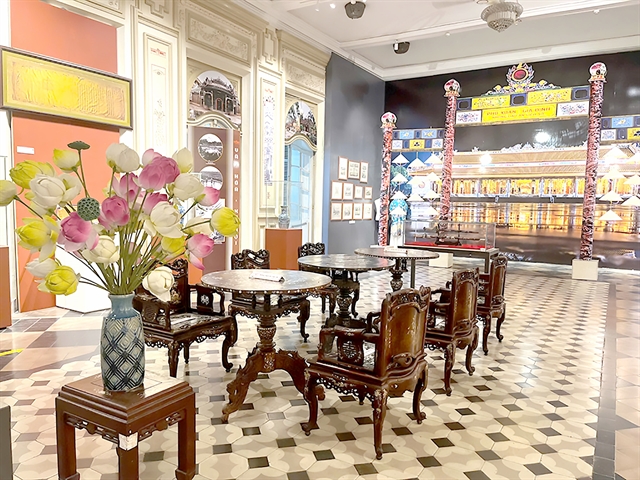A special exhibition featuring the history and development of Huế Citadel has opened at the Museum of Hồ Chí Minh City.

A collection of more than 300 photos, documents and objects highlighting the history and culture of Huế Citadel are displayed at the exhibition. — Photo courtesy of HCM City Museum
HCM CITY — A special exhibition featuring the history and development of Huế Citadel has opened at the HCM City Museum.
The event, Phú Xuân-Huế-Gia Định, Những Dấu Ấn Lịch Sử (Phú Xuân-Huế-Gia Định, The Touches of History), is co-organised by the museum and Museum of Thừa Thiên-Huế Province.
It features a collection of more than 300 photos, documents and objects highlighting the history and culture of Huế Citadel.
“Our exhibition aims to preserve and promote the royal history and culture of Huế Citadel, as well as introduce heritage from the ancient city of Huế to visitors,” Đoàn Thị Trang, deputy director of the city's museum and a member of the event’s organising board, said.
The exhibition includes three parts. The first part introduces the history and development of the citadel from Phú Xuân-Thuận Hóa and Huế, and the second part features documents on the Nguyễn Dynasty.
The third part displays the traditional culture and lifestyle of Huế people from handicraft villages such as Thanh Tiên Village and Địa Linh Village.
Huế Citadel was the capital of the Nguyễn Dynasty for 140 years. It was a centre of political power and policy application from the 17th to the 20th centuries.
In 1802, after reunifying the country and ascending to the throne, King Gia Long, the first king of the Nguyễn Dynasty, decided to choose Phú Xuân-Thuận Hóa (now Huế City) to build the Huế Citadel.
At that time, local people travelled by elephants and horses.
The citadel’s construction began in 1805. It includes three layers of walls and was well constructed.
The citadel witnessed the glorious time of the Nguyễn Dynasty, and the ups and downs of the last dynasty, playing an important role in the history of Việt Nam. It closed the feudal period when King Bảo Đại abdicated in 1945.
It was listed as a UNESCO World Heritage site in 1993 and the remaining buildings are being restored and preserved.
The exhibition, Phú Xuân-Huế-Gia Định, Những Dấu Ấn Lịch Sử, is open every day between 9am and 5pm until February 22 at 65 Lý Tự Trọng Street, District 1.

CENTRAL CULTURE: The traditional culture and lifestyle of Huế people from handicraft villages are displayed at the Museum of Hồ Chí Minh City. Photo courtesy of HCM City Museum
Tourist city
Huế City will soon be a centrally-governed city after a resolution approved by the National Assembly comes into force from January 1.
Under the resolution, the city will be based on the entire natural area of 4,947.11sq.km and a population of 1,236,393 in the central province of Thừa Thiên-Huế.
The establishment of two new inner districts Phú Xuân and Thuận Hoá along with the core zone of Huế City, with a population of 500,000, is included.
A new report from Booking.com named Huế as among the destinations that domestic travellers want to visit most during the upcoming holidays. The city ranked seventh in the top ten most searched domestic destinations for Vietnamese travelers traveling from April 26-May 1, 2024.
The city’s remarkable ancient architecture attracts many Vietnamese and foreign visitors.
The Huế Festival Week 2024 taking place from June 7-12 under the theme of "Cultural Heritage amid Integration and Development" attracted 30 art troupes from France, Belgium, Spain, Canada, Japan, China, the Republic of Korea (RoK), and Việt Nam.
"Our Huế Festival Week 2024 created a series of art performances and attractive stage spaces for more than 100,000 visitors," said Nguyễn Thanh Bình, deputy chairman of Thừa Thiên-Huế Province People's Committee and head of the event's organising board. — VNS